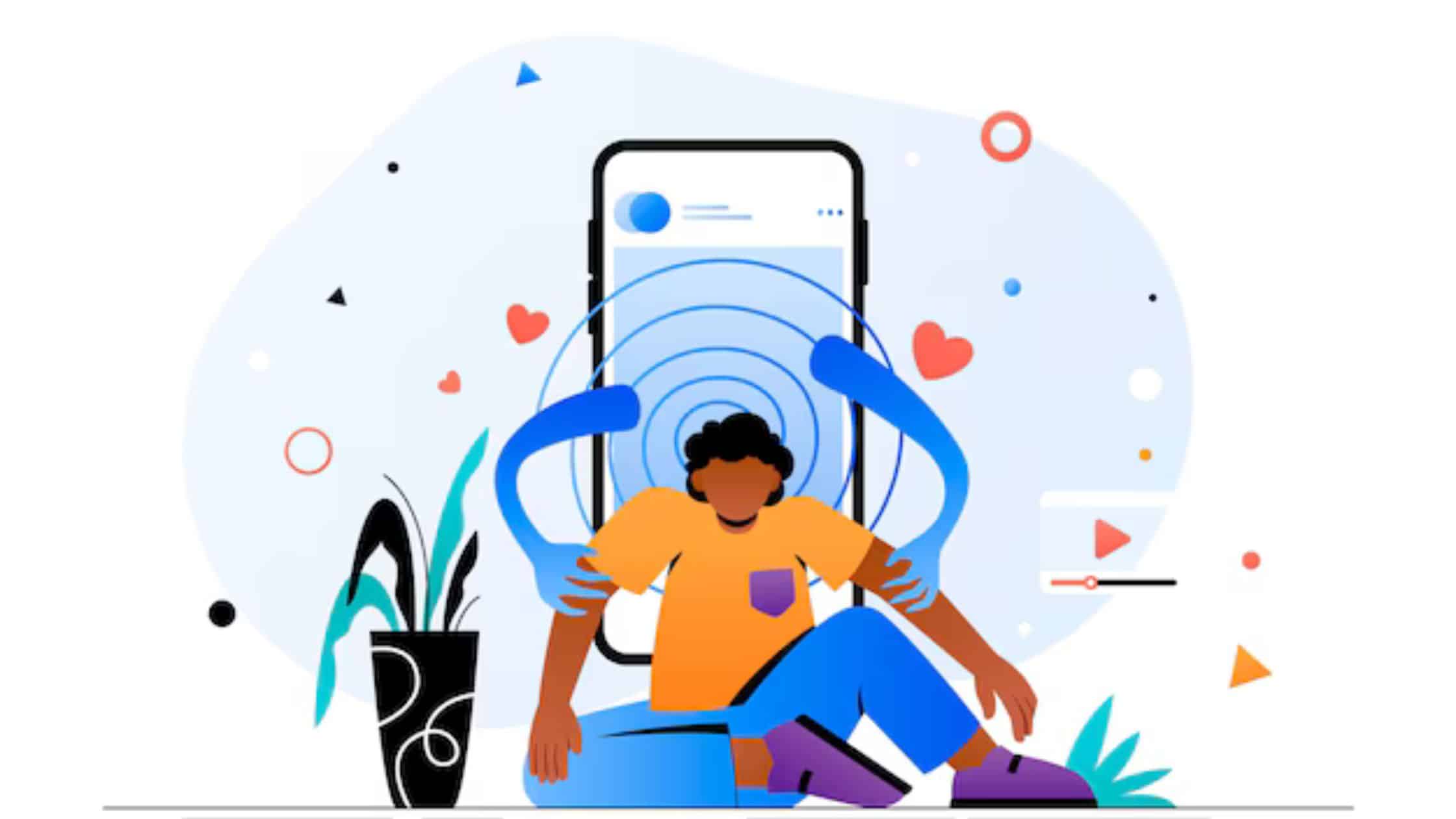Technology addiction, also known as problematic technology use, is a growing concern in today’s hyper-connected world. It’s characterized by an uncontrollable urge to use technology despite negative consequences on daily life, work, relationships, and mental health. Unlike occasional excessive use, technology addiction becomes a pattern of behavior that disrupts your ability to function normally.
Recognizing the importance of addressing this issue is essential not only for individuals struggling with addiction but also for society as a whole, as it affects people of all ages and backgrounds. By understanding how to prevent technology addiction and implementing effective strategies to mitigate its effects, individuals can regain control over their digital habits and lead healthier, more balanced lives.
Causes of Technology Addiction
Our constant urge to check our phones, scroll through endless social media feeds, or binge-watch the latest series isn’t random. Several factors contribute to the development of technology addiction.
Accessibility of technology
- Constant access to digital devices and high-speed internet facilitates excessive use.
- Ease of turning to devices for entertainment, communication, or distraction contributes to addiction.
Dopamine response to technology use
- Engagement with technology triggers dopamine release in the brain, creating pleasure.
- Over time, individuals may develop tolerance, leading to more frequent or intense use to achieve satisfaction.
Social pressures and norms
- Societal expectation to be constantly connected online influences addictive behaviors.
- Fear of missing out (FOMO) drives individuals to maintain an online presence, reinforcing addiction.
Psychological factors such as stress or loneliness
- Technology serves as a coping mechanism to escape negative emotions or stress.
- Online interactions provide temporary relief and validation, exacerbating addictive behaviors.
By understanding how to prevent technology addiction, we can develop strategies to break the cycle of technology addiction and create a healthier, more balanced relationship with technology.
Effects of Technology Addiction
Technology addiction isn’t just about spending too much time online; it’s about how technology use disrupts the delicate balance of our lives. It’s not just about spending a few extra hours online; it’s about how technology disrupts the delicate balance of our mental well-being, relationships, daily routines, and overall productivity. When technology negatively impacts your well-being, it’s a clear sign that a change is needed.
Impact on mental health
- Anxiety and Depression: The curated perfection often portrayed online can breed feelings of inadequacy and social comparison. The constant pressure to maintain an online presence and the fear of missing out (FOMO) can significantly contribute to anxiety and depression.
- Disturbed Sleep Patterns: The blue light emitted from screens disrupts melatonin production, a hormone crucial for regulating sleep cycles. This leads to difficulty falling asleep, restless nights, and daytime fatigue, further impacting focus and cognitive function.
- Distorted Self-Image: Oversaturation with unrealistic beauty standards and idealized online personas can negatively impact self-esteem and body image, especially in adolescents and young adults.
Interference with daily activities and responsibilities
- Technology addiction can result in neglect of important tasks such as work, school, or household responsibilities.
- Excessive screen time may lead to neglect of self-care activities such as exercise, proper nutrition, and personal hygiene.
- The inability to regulate technology use can disrupt daily routines and lead to a loss of time management skills.
Strained relationships
- Excessive focus on technology can lead to neglect of real-life relationships, causing feelings of loneliness and isolation.
- Constant engagement with devices during social interactions can lead to decreased intimacy and communication within relationships.
- Conflict may arise when technology interferes with quality time spent with family and friends.
Decreased productivity and focus
- Multitasking: The illusion of multitasking, while glued to our devices, leads to shallow work and hinders our ability to concentrate intensely on a single task. We switch between tasks constantly, accomplish less, and feel overwhelmed.
- Procrastination: Technology offers a never-ending stream of distractions. This can easily lead to procrastination, pushing deadlines aside and hindering our ability to complete important tasks.
- Brain Drain: Constant reliance on technology for information and entertainment can hinder the development of critical thinking skills and creativity. Our brains become accustomed to instant gratification, diminishing the ability to solve problems independently or think outside the box.
These adverse effects highlight the importance of addressing technology addiction and developing a healthier relationship with technology.
How to Prevent Technology Addiction and Reclaim Control?
Technology addiction isn’t an insurmountable challenge. By implementing these practical strategies, you can break the cycle and develop a healthier relationship with technology:
Set Limits and Boundaries on Technology Use
- Utilize Time Management Tools: Many smartphones and apps offer built-in features like app limits or Do Not Disturb modes. Leverage these tools to manage your screen time. Consider setting daily or weekly limits for specific apps or total screen time.
- Designate Tech-Free Zones and Times: Create specific areas in your home or office that are technology-free. These could include your bedroom, dining table, or study area. Designate “tech-free” times throughout the day, like first thing in the morning or before bed.
Engage in Alternative Activities
- Embrace the Outdoors: Immerse yourself in nature. Go for walks, hikes, or simply sit in a park. Studies show that spending time outdoors reduces stress and improves mood.
- Cultivate Hobbies and Interests: Rediscover or explore new hobbies that don’t involve technology. Pursue activities that foster creativity, physical exercise, or social interaction. This could include painting, playing music, learning a new skill, or joining a club.
Seek Social Support
- Share Your Goals with Loved Ones: Talk to friends and family about your desire to manage your technology use. Tell them your goals and enlist their support and understanding.
- Connect with Support Groups: Online or in-person support groups can connect you with others facing similar challenges. Sharing experiences and offering encouragement can be a valuable resource in overcoming technology addiction.
Practice Mindfulness and Self-Awareness
- Identify Your Triggers: Recognize situations, emotions, or environments that lead to excessive technology use. For example, feeling stressed or bored might trigger the urge to check your phone constantly. Once you identify these triggers, develop alternative coping mechanisms.
- Mindful Tech Use: Be present when using technology. Avoid multitasking and actively engage with the content you consume. Set aside specific times for checking emails or social media and stick to those timeframes.
- Manage Cravings and Urges: Technology withdrawal can cause cravings just like any addiction. Practice mindfulness techniques like meditation or deep breathing to manage these urges. Apps can also be helpful for mindfulness exercises.
Don’t be discouraged by occasional setbacks. By implementing these tips and developing a more mindful approach to technology, you can reclaim control of your time and create a healthier, more fulfilling digital lifestyle.
FAQs
1. What are the causes of technology addiction?
Causes of this addiction may stem from childhood patterns of excessive internet usage without parental oversight, alongside experiences of recent trauma, heightened stress levels, or substance use disorders. These factors significantly elevate the risk of developing technology addiction.
2. How to prevent technology addiction in children?
Restrict screen time for TV, computers, and mobile devices to no more than 30 minutes per session. Establish designated periods for device usage and encourage your child to participate in enjoyable physical activities during other times.
3. How to prevent technology addiction in three ways?
Establish time constraints for your usage. Aim to reduce the duration of your internet sessions. Employ external shutdown tools for your computer and phone. Consider discontinuing the use of specific applications altogether or opt for apps that offer features to restrict your online time.
4. Can technology cause addiction?
Technology addictions can significantly affect mental health, worsening conditions such as anxiety, depression, attention deficit hyperactivity disorder (ADHD), and other related disorders. Additionally, technology addiction may result in feelings of restlessness, irritability, agitation, and anger.
Conclusion
Addressing technology addiction is crucial in today’s digital age to ensure a healthier and more balanced relationship with technology. By understanding the causes and effects of technology addiction and implementing practical strategies to prevent and overcome it, individuals can reclaim control over their digital habits and improve their overall well-being.
Take the first step towards a healthier digital lifestyle today! Join Avisa in our mission to break free from technology addiction and regain control of your life. Start implementing these strategies today and experience the benefits of a more balanced relationship with technology. Your well-being and happiness are worth the effort. Let’s make a positive change together!











